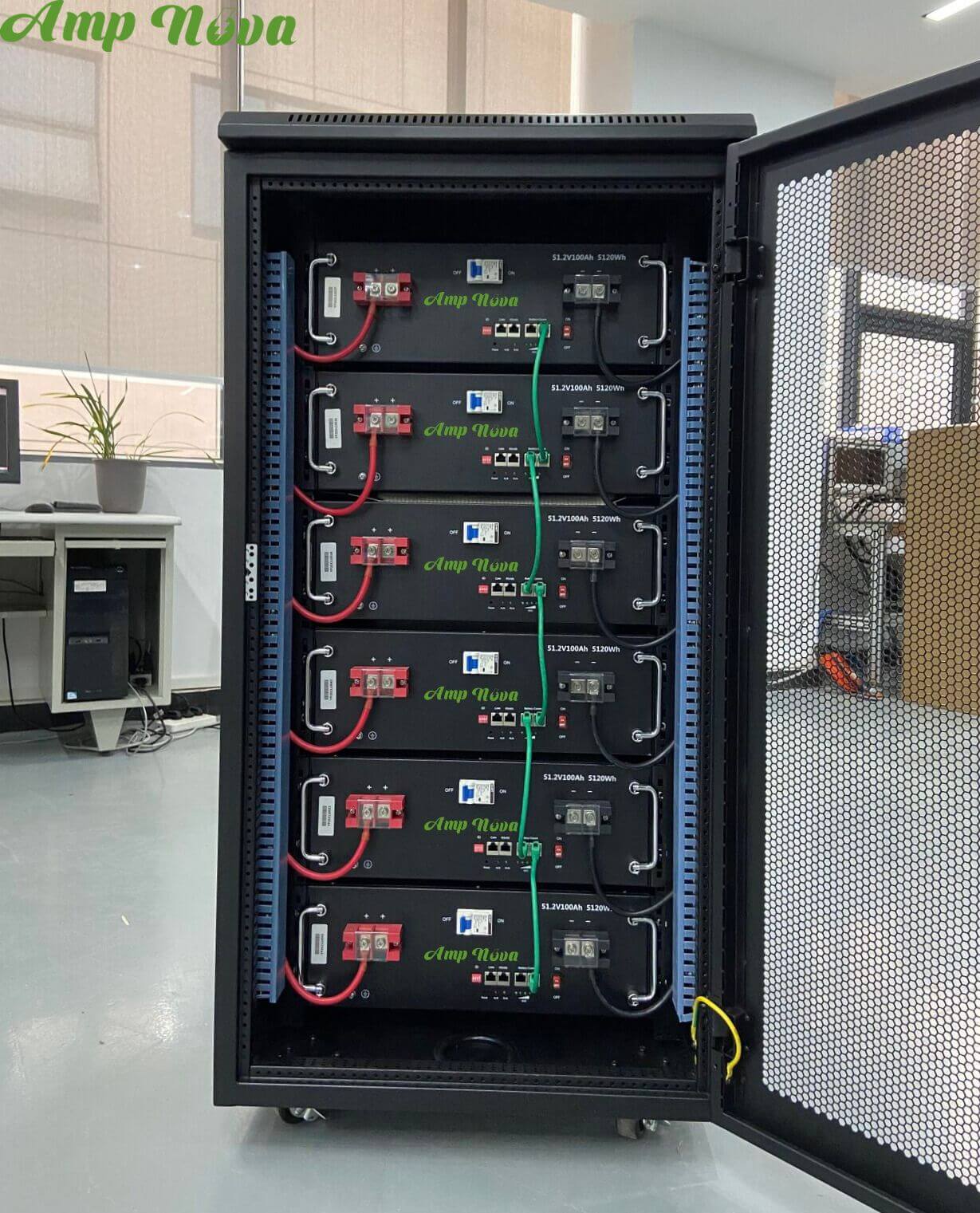- Introduction
- Understanding Series Connections
- Advantages of Batteries in Series
- Disadvantages of Batteries in Series
- Can I Wire Batteries With Different Voltages In Series?
- How Many Batteries Can I Wire In Series?
- Understanding Parallel Connections
- Advantages of Batteries in Parallel
- Disadvantages of Batteries in Parallel
- Can I Wire Batteries With Different Voltages In Parallel?
- How Many Batteries Can I Wire In Parallel?
- Batteries in Series Vs Parallel, Which Is Better?
Contents
- 1 Introduction
- 2 Understanding Series Connections
- 3 Advantages of Wiring Batteries in Series
- 4 Disadvantages of Connecting Batteries in Series
- 5 Can I Wire Batteries With Different Voltages In Series?
- 6 How Many Batteries Can I Wire In Series?
- 7 Understanding Parallel Connections
- 8 Advantages of Wiring Batteries in Parallel
- 9 Disadvantages of Connecting Batteries in Parallel
- 10 Can I Wire Batteries With Different Voltages In Parallel?
- 11 How Many Batteries Can I Wire In Parallel?
- 12 Batteries in Series Vs Parallel, Which Is Better?
- 13 How We Can Help You
Introduction
When it comes to powering our devices and systems, batteries play a crucial role. However, depending on our specific requirements, we often face the dilemma of deciding between connecting batteries in series vs parallel. Each configuration has its own advantages and disadvantages, and it’s important to understand them in order to make an informed decision. This article will explore both series and parallel connections of batteries, highlighting their respective advantages and disadvantages.
Understanding Series Connections
In a series connection, batteries are connected end to end, resulting in a chain-like configuration. This configuration increases the overall voltage while keeping the capacity constant. For example, if you connect two 12-volt batteries in series, the output voltage will be 24 volts.
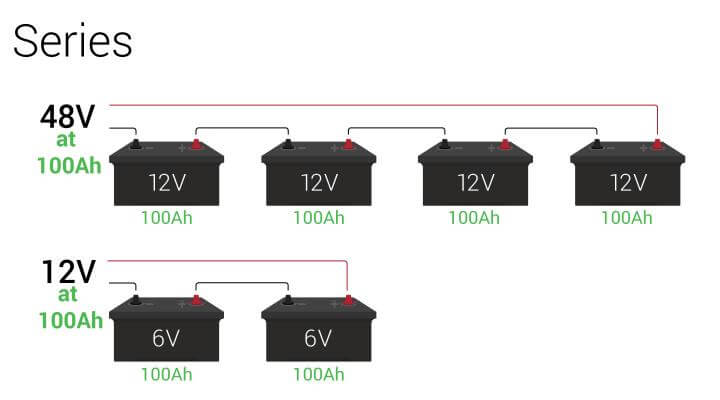
Advantages of Wiring Batteries in Series
- Increased Voltage: The primary advantage of series connections is the increased output voltage. This is particularly useful when higher voltages are required to drive specific applications or power electronic devices.
- Stable Current: Series connections help maintain a more consistent current flow. This can be beneficial in applications that require a steady power supply, such as electric vehicles or uninterruptible power supplies (UPS).
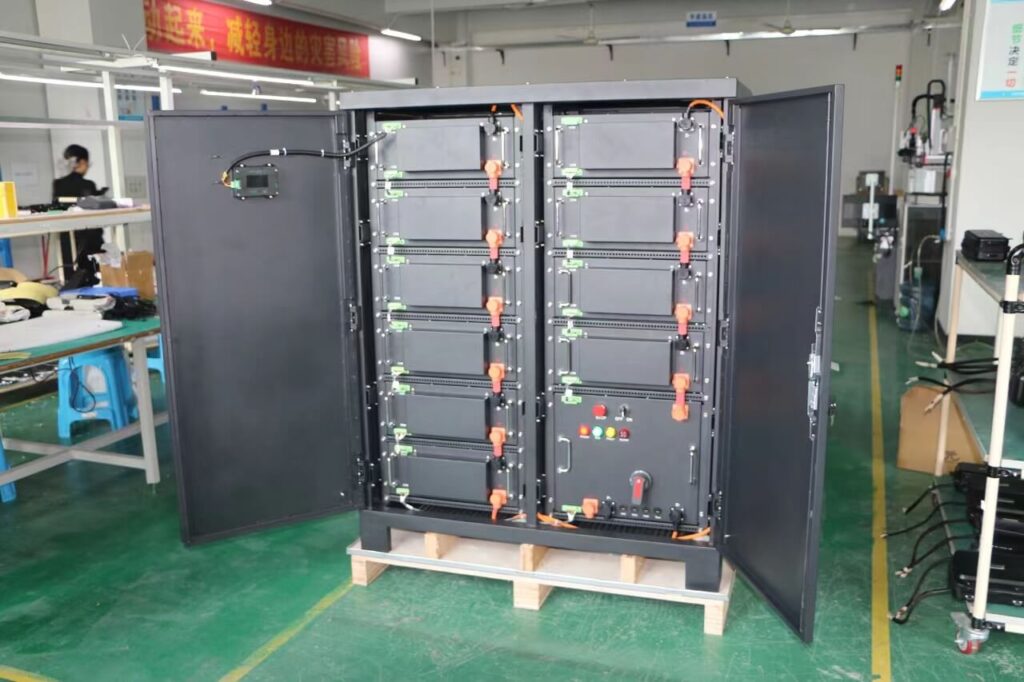
Disadvantages of Connecting Batteries in Series
- Reduced Capacity: One major downside of connecting batteries in series is that the overall capacity remains the same as that of a single battery. This means that although the voltage increases, the runtime or operating duration decreases.
- Voltage Disproportionality: It’s important to note that in series connections, each battery must have the same voltage rating. Otherwise, the battery with the lowest capacity will drain faster and potentially damage the others in the series.
Can I Wire Batteries With Different Voltages In Series?
When you wire batteries with different voltages in series, the total voltage is the sum of the individual voltages. However, there are several concerns to be aware of:
- Imbalanced Discharge: The battery with the lower capacity will discharge faster than the one with higher capacity. Once the lower-capacity battery is fully discharged, it can act as a load, causing it to reverse charge, which can be dangerous.
- Reduced Capacity: The overall capacity of the series connection will be limited by the battery with the smallest capacity.
- Different Chemistry Concerns: If the batteries have different chemistries, they may have different voltage curves, discharge rates, and other characteristics. This can lead to imbalances and potential damage.
- Potential Damage: If one battery becomes fully charged or discharged before the others, it can be damaged or have a reduced lifespan.
- Safety Concerns: Mixing batteries can lead to overheating, leakage, or even explosion in extreme cases.
In general, it’s recommended to use batteries of the same type, brand, capacity, and state of charge when wiring in series. If you must use batteries with different voltages, it’s crucial to monitor them closely and understand the risks involved. Always consult with a professional or expert before making such connections.
How Many Batteries Can I Wire In Series?
The number of batteries you can wire in series depends on several factors:
- Intended Voltage: Wiring batteries in series increases the total voltage. The number of batteries you can connect in series will depend on the desired total voltage for your application. For example, if you need a 48V system and you have 12V 100Ah Amp Nova batteries, you would wire four batteries in series.
- Battery Specifications: Always refer to the manufacturer’s specifications and guidelines. Some batteries, especially certain types of rechargeable batteries, may have limits on how many can be connected in series due to concerns about voltage imbalances, charging, and management.
- Battery Management System (BMS): If you’re using a BMS (especially common with lithium-ion batteries), the BMS might have a limit on how many cells or batteries can be managed in series.
- Safety and Regulation: Depending on the application (e.g., electric vehicles, solar installations), there might be safety standards or regulations that limit the voltage or the number of batteries in series.
- Practical Considerations: As you increase the number of batteries in series, the complexity of the system also increases. More batteries mean more connections, increased chances of a connection failure, and potentially more maintenance.
In many practical applications, it’s common to see systems with anywhere from 2 to 16 batteries wired in series, but this can vary widely. For very high-voltage applications, such as utility-scale energy storage or certain industrial applications, many more batteries might be wired in series.
Always ensure that you understand the requirements of your specific application, and when in doubt, consult with Amp Nova or an expert in the field.
Understanding Parallel Connections
In a parallel connection, batteries are connected side by side, creating a parallel flow of current. This configuration increases the overall capacity while keeping the voltage constant. For example, if you connect two 12-volt batteries in parallel, the output voltage will remain at 12 volts, but the capacity will double.
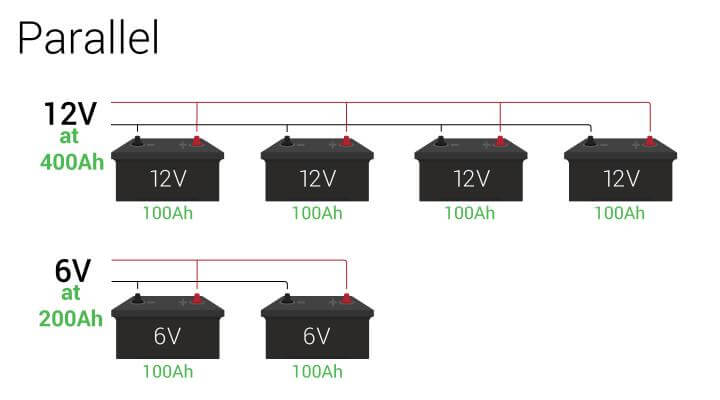
Advantages of Wiring Batteries in Parallel
- Increased Capacity: The primary advantage of parallel connections is the increased overall capacity. This means that devices and systems can run for a longer duration without needing to recharge or replace the batteries.
- Flexible Voltage: Parallel connections allow for more flexibility in the voltage requirements. By connecting batteries with different voltage ratings, it is possible to achieve the desired voltage output while maintaining a higher capacity.
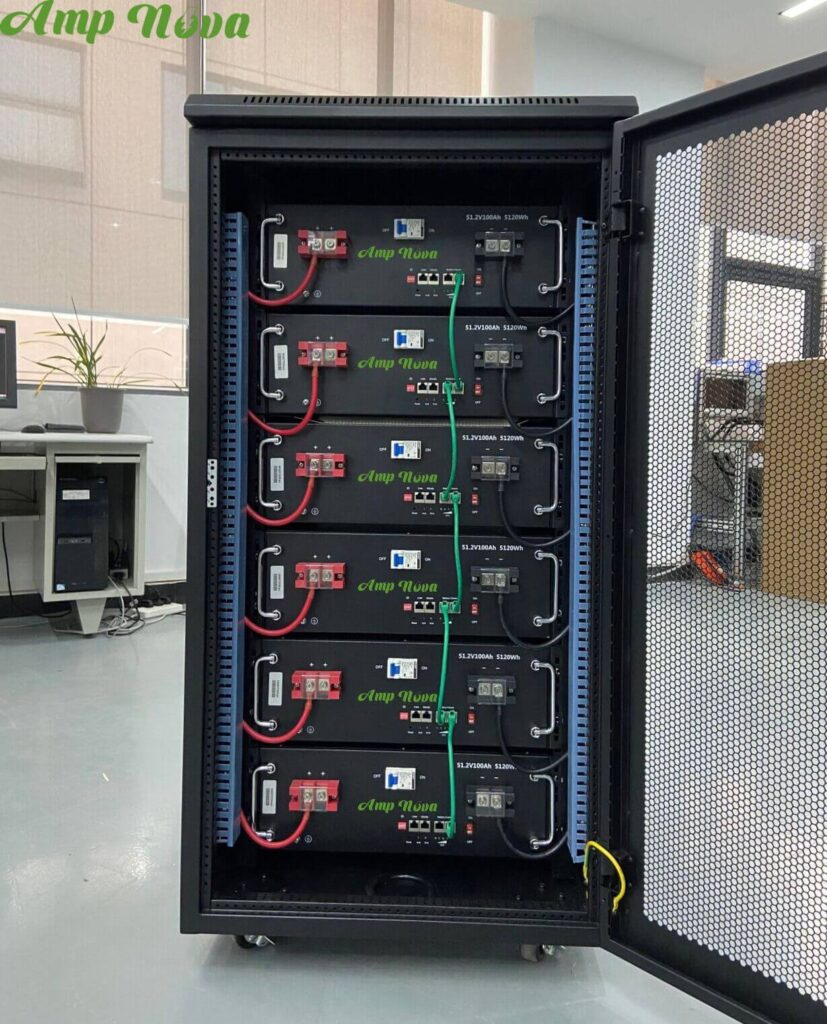
Disadvantages of Connecting Batteries in Parallel
- Unbalanced Charging and Discharging: When batteries are connected in parallel, they may not charge or discharge at the same rate. This can lead to an imbalance where some batteries may reach maximum capacity while others lag behind. It is important to monitor and manage the charging and discharging process to avoid such imbalances.
- Complexity in Battery Management: Managing batteries in parallel requires extra attention to ensure that all batteries are functioning optimally. This includes monitoring individual battery health, equalizing charge levels, and replacing any faulty batteries promptly.
Can I Wire Batteries With Different Voltages In Parallel?
Wiring batteries with different voltages in parallel is generally not recommended. Here’s why:
- Equalization of Voltage: When batteries of different voltages are connected in parallel, the higher voltage battery will try to charge the lower voltage battery until their voltages equalize. This can result in a rapid and uncontrolled current flow between the batteries, which can generate heat and potentially damage the batteries.
- Imbalanced Discharge: Even if the batteries start at the same voltage, they might not discharge at the same rate if they have different capacities or chemistries. This can lead to one battery discharging faster than the others, which can cause imbalances in the system.
- Different Chemistry Concerns: Batteries with different chemistries have different voltage curves, discharge rates, and other characteristics. When connected in parallel, these differences can lead to imbalances and potential damage.
- Reduced Lifespan: The lifespan of the batteries can be reduced due to the stresses of imbalanced charging and discharging.
- Safety Concerns: As with series connections, mixing batteries in parallel can lead to overheating, leakage, or even explosion in extreme cases.
If you need to connect batteries in parallel, it’s best to use batteries of the same type, brand, capacity, and state of charge. If you must use batteries with different voltages in parallel, it’s crucial to use diodes or other protective measures to prevent backflow of current and to monitor the system closely. Always consult with a professional or expert before making such connections.
How Many Batteries Can I Wire In Parallel?
The number of batteries you can wire in parallel largely depends on the application and the specific batteries being used. Here are some factors to consider:
- Intended Capacity: Wiring batteries in parallel increases the total capacity (ampere-hours or Ah) of the system. The number of batteries you can connect in parallel will depend on the desired total capacity for your application. But if you are using lithium-ion batteries with BMS, please refer to point 3.
- Battery Specifications: Always refer to the manufacturer’s specifications and guidelines. Some batteries may have limits on how many can be connected in parallel due to concerns about current imbalances and charging.
- Battery Management System (BMS): If you’re using a BMS, especially with lithium-ion batteries, the BMS might have a limit on how many cells or batteries can be managed in parallel. Amp Nova’s BMS can support 32 units in parallel connection.
- Safety and Regulation: Depending on the application, there might be safety standards or regulations that limit the number of batteries in parallel or the total capacity.
- Current Handling: The total current of the parallel system is the sum of the currents of each battery. Ensure that the wiring, connectors, and any other components can handle the combined current of all the batteries.
- Practical Considerations: As with series connections, the complexity of the system increases with more batteries. More batteries mean more connections, increased chances of a connection failure, and potentially more maintenance.
- Equalization: It’s crucial that all batteries in a parallel configuration are at the same voltage level when connected. If not, a high current can flow from the higher-voltage battery to the lower-voltage battery, potentially causing damage.
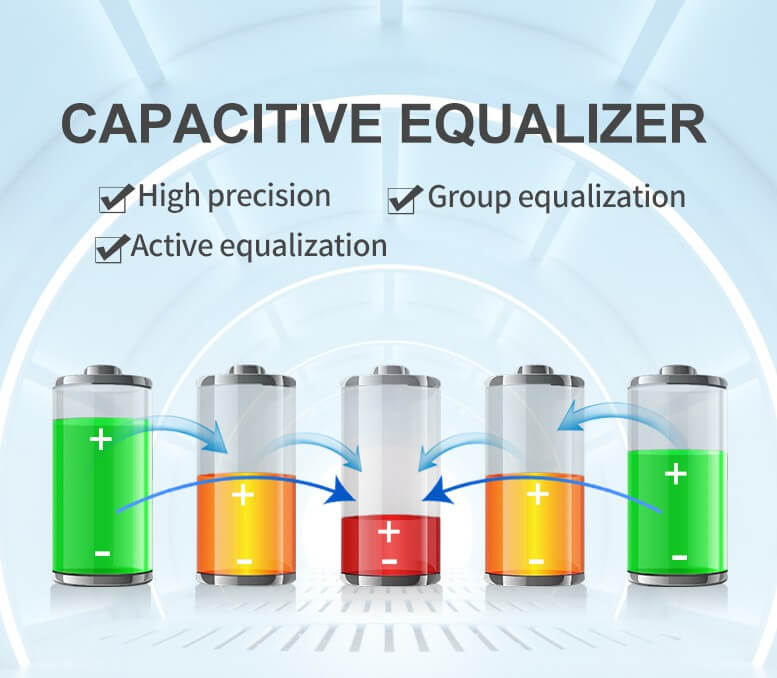
In many applications, it’s common to see systems with several batteries wired in parallel, but there’s no strict upper limit. However, as the number of batteries increases, so does the importance of proper management, monitoring, and maintenance.
If you’re considering wiring a large number of batteries in parallel, it’s essential to understand the requirements of your specific application and to consult with Amp Nova or an expert in this industry.
Batteries in Series Vs Parallel, Which Is Better?
Deciding which battery configuration is best, series or parallel, depends on the specific requirements and constraints of the application. Series connections are suitable for applications that require higher voltage output and stable current, while parallel connections are ideal for applications that demand increased capacity and flexibility in voltage requirements.
It is important to weigh the advantages and disadvantages mentioned above and consider factors such as power demands, runtime needs, and battery maintenance capabilities. Understanding these configurations will help make an informed decision and optimize battery performance.
In summary, it is essential to assess the power needs of your application and carefully consider the advantages and disadvantages of batteries in series and parallel before making a decision.
How We Can Help You
Are you looking to learn more about Lithium Batteries and electrical systems? We understand how difficult it can be to build or upgrade an electrical system, so we’re here to assist. Reach Our sales and customer service team at [email protected] OR LinkedIn.
